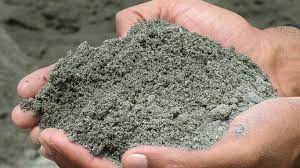Introduction
At V Build Infra, we believe your dream home deserves the best (river sand or M sand). From the strength of the foundation to the finish of the walls, every material matters. And when it comes to construction sand—something that literally holds your structure together—choosing the right one is more important than you might think.
One of the most common questions our clients ask is:
“Should we use river sand or M sand?”
Let’s walk you through everything you need to know, so you can make the best decision for your home.

What is River Sand?
River sand is naturally collected from riverbeds. It has smooth, fine particles due to years of natural weathering and erosion. Traditionally, it’s been used in construction for plastering, brickwork, and even concrete.
However, overuse and unregulated mining have made river sand scarce and, in many regions, illegal to extract.

What is M Sand?
M Sand, or Manufactured Sand, is made by crushing granite stones into fine particles. This alternative has gained popularity due to its consistent quality, better strength, and reduced environmental impact.
At V Build Infra, we’ve used M Sand across many residential and commercial projects with fantastic results.

Key Differences Between River Sand and M Sand
Let’s break it down for you.
1. Texture & Appearance
- River Sand: Smooth, fine, naturally rounded particles.
- M Sand: Angular particles, rough texture, but uniform.
2. Strength in Concrete
- M Sand offers better bonding with cement, thanks to its rough surface.
- River Sand is good, but it may reduce strength due to its smoothness.
3. Purity
- River sand may contain clay, silt, and other organic impurities.
- M Sand is cleaner and more consistent, as it’s manufactured under controlled settings.
4. Availability & Cost
- River sand is becoming expensive and hard to source, especially in urban areas.
- M Sand is easily available and cost-effective, with prices typically 30-40% lower.
5. Environmental Impact
- River sand extraction leads to riverbank erosion, habitat loss, and water pollution.
- M Sand is eco-friendly, made from crushed rocks, and doesn’t harm natural ecosystems.
Use Cases: Where Each Sand Works Best
Here at V Build Infra, we usually follow this approach:
Use River Sand for:
- Plastering and finishing work – It gives a smoother surface finish.
- Masonry work – Especially in non-load-bearing areas.
Use M Sand for:
- Concrete (RCC) works – Stronger bonding and durability.
- Foundations, columns, slabs, and beams – Where strength is critical.
- Brick/block laying – When properly sieved.
We often recommend combining both, depending on the stage of construction and the type of work involved.
Pros and Cons Comparison Table
| Feature | River Sand | M Sand |
|---|---|---|
| Source | Natural (Riverbeds) | Manufactured (Crushed rocks) |
| Texture | Smooth, rounded | Angular, rough |
| Purity | May have silt & clay | Clean & controlled |
| Availability | Decreasing | Widely available |
| Strength in Concrete | Medium | High |
| Environmental Impact | High | Low |
| Cost | Higher | Lower |
| Legal Issues | Prone to bans | Legally encouraged |
| Ideal For | Plastering, masonry | RCC, foundations, structural use |
Government Guidelines
M Sand is now widely accepted by government authorities, and the IS 383:2016 code includes specifications for its use. In fact, many state governments are encouraging M Sand to reduce the impact of river sand mining.
So, using M Sand isn’t just smart—it’s also compliant and future-proof.
Our Recommendation at V Build Infra
If you’re building a home, here’s our simple take:
- For strength, structure, and durability – Go with M Sand.
- For aesthetic finishing or plastering – Choose river sand, or well-processed M Sand with proper grading.
We’ve delivered hundreds of successful residential and commercial projects with this approach, and it never fails.
Cost Comparison: M Sand vs River Sand
| Type | Avg. Cost (₹ per ton) |
|---|---|
| River Sand | ₹1,500 – ₹2,500 |
| M Sand | ₹900 – ₹1,200 |
As you can see, M Sand gives you more value for your money.
Still Confused? Let Us Help.
At V Build Infra, we don’t just construct buildings—we guide our clients at every step, including material selection.
We also provide free plot search services (0% commission) for clients who are ready to build with us. So, if you’re still looking for the right plot, we’ve got your back—without charging a single rupee.
Conclusion
Building your dream home is a major life decision, and the quality of materials you choose will define its strength and longevity.
M Sand is the future—strong, eco-friendly, and economical. River sand still has a place, especially in finishing works, but its availability and environmental costs make it a limited resource.
Still not sure what’s best for your project?
Reach out to our team at V Build Infra, and we’ll help you choose the right materials based on your design, budget, and goals.
FAQs
1. Is M Sand suitable for all types of construction?
Yes, M Sand is ideal for RCC, foundations, and masonry. For plastering, make sure it’s finely graded or use river sand if available.
2. Is river sand banned in Telangana?
It’s not banned entirely, but it’s regulated. Many areas limit extraction to protect rivers, so availability can vary.
3. Does M Sand reduce construction costs?
Absolutely! It’s more affordable than river sand and also improves structural strength, reducing long-term maintenance.
4. Is M Sand safe for home construction?
Yes, when sourced from a reliable supplier and as per IS standards, M Sand is 100% safe and approved for use.
5. Do you help with material sourcing too?
Yes! At V Build Infra, we provide complete end-to-end construction services, including material procurement, design, and execution.


